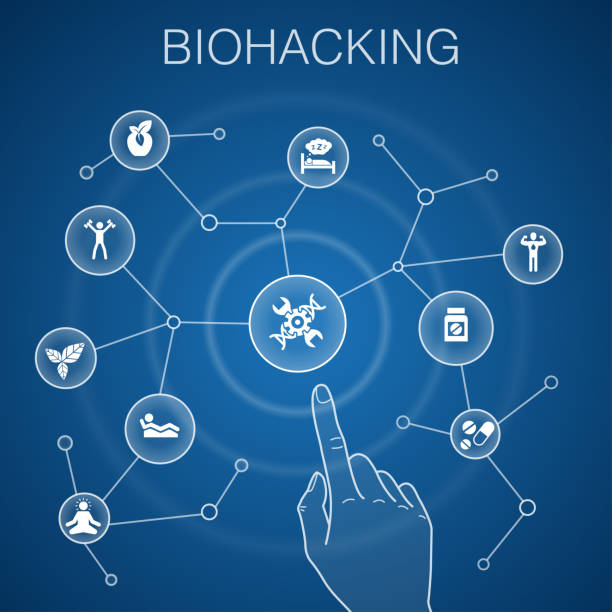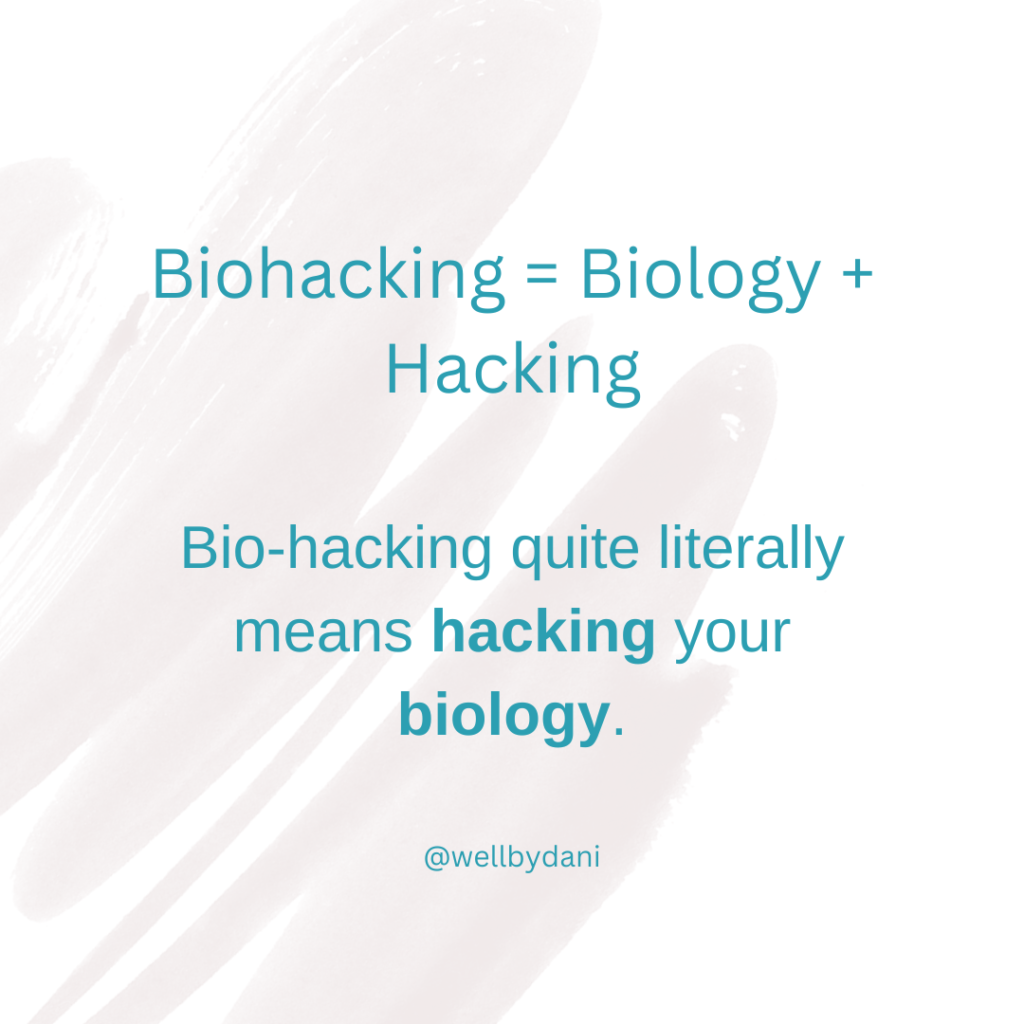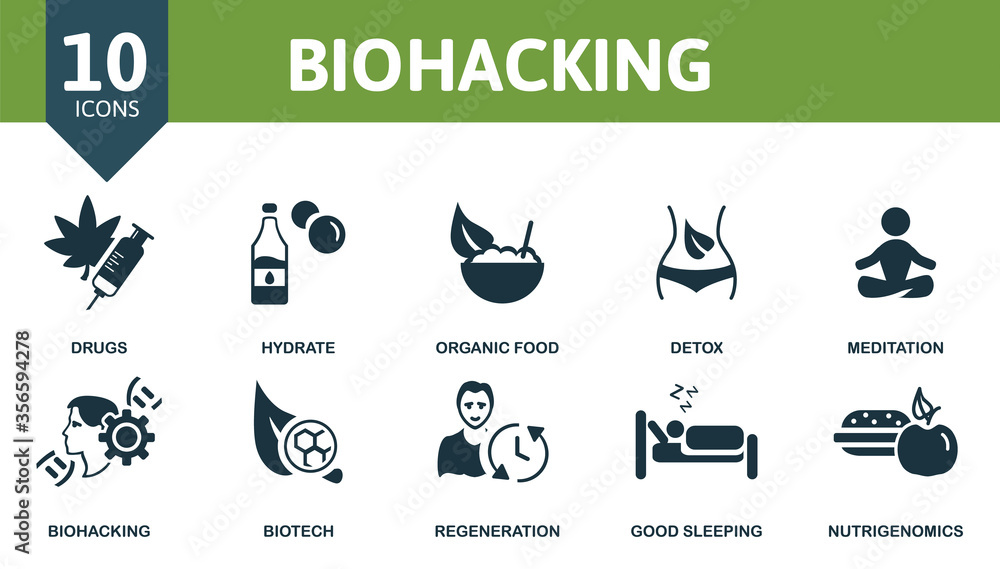In the quest for better health, sharper focus, and even increased longevity, more people are turning to a concept that sounds straight out of a sci-fi novel: biohacking. While the term might evoke images of mad scientists in a lab or high-tech implants, the reality is often much simpler—and much more accessible. Let’s dive into what biohacking actually is, how it works, and what it means for your everyday life.

Understanding Biohacking
Biohacking = Biology + Hacking
Biohacking quite literally means hacking your biology. It is the art and science of changing the environment around you and inside you, so you have more control over your own biology. It’s not about restrictive diets or killing yourself at the gym — it’s about understanding how your body works and making strategic adjustments to optimize your health, performance, and overall well-being.
Biohacking is like being a detective and a scientist for your own body. Imagine you’re trying to figure out how to help your body feel its best, like having more energy to play, thinking super clearly, or just staying healthy.
You can do this by trying out little experiments, like going to bed earlier to see if it makes you less tired, eating more veggies to see if you feel stronger, or even doing fun activities like mindfulness exercises to help you stay calm. Some people even use gadgets, like watches that count their steps or track their heart rate, to learn more about how their bodies are doing. It’s all about understanding what makes you feel great and then doing more of it!

Biohacking encompasses a wide range of practices, from simple lifestyle changes like improving sleep quality and managing stress, to more advanced techniques such as tracking biomarkers, experimenting with supplements, or even using technology like wearable devices. The ultimate goal is empowerment—giving you the tools to take charge of your health in a way that is personalized, sustainable, and effective.
Essentially, if you’ve ever tweaked your habits to feel better—like cutting out sugar, trying meditation, or tracking your steps—you’ve engaged in a form of biohacking.
Common Types of Biohacking
Biohacking is a broad concept, and it comes in many flavors depending on your goals and level of commitment. Here are some of the most popular categories:
1. Nutritional Biohacking
Focuses on how food affects your body and brain. Includes practices like:
- Intermittent fasting.
- Keto or other targeted diets.
- Using supplements like nootropics for cognitive enhancement.
Example: Drinking bulletproof coffee (coffee blended with butter and MCT oil) to boost mental clarity and energy.
2. Wearable Tech
- Leverages devices like fitness trackers and smartwatches to monitor and improve health metrics.
- Measures things like sleep quality, heart rate, and activity levels.
- Biohackers use this data to tweak their habits, such as improving sleep patterns or increasing daily movement.
3. Sleep Optimization
Involves techniques and tools to improve rest and recovery. Includes:
- Using blue-light-blocking glasses to reduce screen-induced sleep disruption.
- Experimenting with sleep apps and devices to track and enhance sleep cycles.
4. Mental and Cognitive Enhancement
- Aims to improve brain function, focus, and mood.
- Techniques include mindfulness meditation, neurofeedback, and microdosing psychedelics (where legally permitted).

The Science Behind Biohacking: Fact vs. Fiction
While biohacking can be exciting, it’s important to separate legitimate science from unproven claims. Some biohacks, like following a nutritious diet or using wearable fitness trackers, are backed by research. Others, like certain supplements or extreme fasting regimens, may have mixed evidence or lack rigorous studies.
Most importantly, listen to your body! It tells us everything we need to know, if only we would stop to listen.

Why Is Biohacking So Popular?
The appeal of biohacking lies in its promise: the idea that you can take charge of your own health and unlock untapped potential. In an era where people are increasingly dissatisfied with traditional healthcare systems, biohacking empowers individuals to experiment and find solutions tailored to their unique needs. Plus, it taps into our fascination with the intersection of technology and biology. As tools like wearable devices become more affordable and data-driven insights more accessible, biohacking feels like the future of personal health.
How to Get Started With Biohacking
Curious about trying it yourself? Here are some beginner-friendly steps:
1. Set Clear Goals
Identify what you want to achieve—better sleep, more energy, sharper focus—and tailor your approach accordingly.
2. Start With the Basics
- Optimize your diet: Focus on whole, nutrient-dense foods.
- Improve sleep hygiene: Stick to a regular schedule, and limit screen time before bed.
- Exercise regularly: Incorporate movement into your daily routine.
3. Track Your Progress
Use wearable devices or apps to monitor your changes. Many biohackers swear by the adage, “You can’t improve what you don’t measure.”
4. Experiment Slowly
Test one biohack at a time to see what works for you. For example, try eliminating caffeine for a week or adding a new supplement to your diet.
Is Biohacking for Everyone?
Biohacking offers an intriguing mix of science, self-improvement, and exploration, but it’s not a one-size-fits-all solution. What works for one person may not work for another, and some practices might not be suitable depending on your health or lifestyle. The best biohacks are those grounded in evidence and aligned with your individual goals.
Whether you’re curious about upgrading your morning routine or diving into cutting-edge experiments, biohacking is ultimately about becoming the best version of yourself. And in today’s fast-paced, tech-savvy world, who wouldn’t want that?